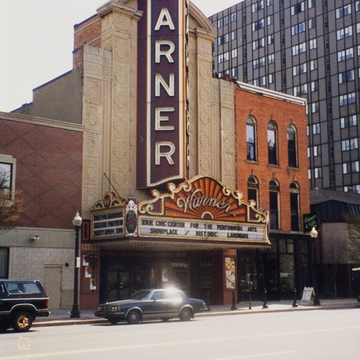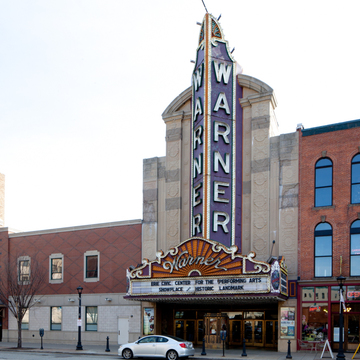Designed in the fantasy mode of the era, Warner Theater's glittering lobby and bronze ticket stand saw the town of Erie through the worst of the Great Depression. C. W. and George Rapp designed several theaters for Warner Brothers, including what is now Heinz Hall in Pittsburgh ( AL11). The designers' goal was to make this theater “twice as rich, three times more fanciful than life.” The limestone facade is dominated by a vertical sign with the theater's name and a canopy with an ornamental curvilinear parapet, both outlined in lights. Warner Brothers hired Rambusch Studios in New York City to decorate the interior. Initially, the 2,500-seat theater supported vaudeville acts as well as films, hosting performers from Bob Hope to Bob Dylan. The building was sold in 1971, refurbished and outfitted for the Erie Philharmonic, which played there for the first time in 1974.
Another Warner Brothers theater, the Strand, opened in 1947 at 13 W. 10th Street. Designed by theater specialist and Pittsburgh architect Victor A. Rigaumont, with 977 seats in stadium style, it today hosts the Erie Playhouse, a community theater troupe.




















